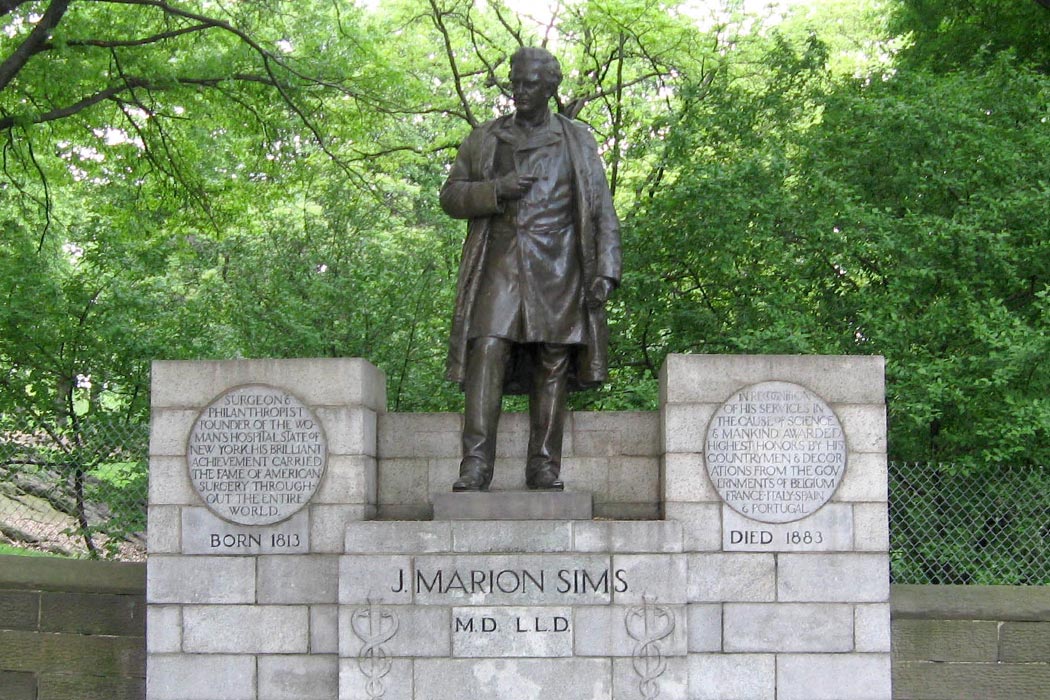What are we to make of memorials celebrating historical figures who stood for concepts we now find morally ambiguous? A recent episode of NPR’s Hidden Brain brings up the question of such contested memorials via the story of the “father of gynecology,” Dr. James Marion Sims. Considering his oft-forgotten test subjects, his story highlights the challenge of how we memorialize the complicated past.
From 1845 to 1849, Sims conducted a series of experimental surgeries on enslaved African American female subjects in order to help treat and come up with a repair for a condition called vesico-vaginal fistula (VVF), a painful condition resulting from obstructed labor. At least ten slave women were part of Sims’ documented experimental procedures, though only three of these women are named: Lucy, Betsey, and Anarcha.
Dr. James Marion Sims has long been a contested figure. Durrenda Ojanuga writes, “The story of Dr. Sims’ discovery of a successful surgical technique for the cure of VVF…is a story of pain and suffering.” Contemporary readers must reconsider Sims’ legacy in light of his human experimentation on African American slaves—experimentation which arguably earned him his much celebrated role as the father of gynecology, resulting in public commemorative statues in New York’s Central Park and in Columbia, South Carolina.
L. L. Wall offers a forceful rebuttal of Ojanuga’s 1993 article in his 2006 article that reconsiders Sims and his legacy in a different light, contesting such newer interpretations of Sims and his experimentation. For instance, Ojanuga notes that the enslaved women could not have agreed to the operations, “as they were totally without any claims to decision-making about their bodies or any other aspect of their lives.” Wall strikes back, citing Sims’ accounts that he “obtained consent from the patients themselves [in addition to the slaves’ owners] before undertaking any operations.”
However, Shankar Vedanta’s recent Hidden Brain interview with Vanessa Northington Gamble suggests it is possible for both Ojanuga and Wall to be right. Gamble explores both the pain and lack of dignity that the enslaved female subjects faced in public surgeries and argues that there is not really any way for present scholars to know if the women actually wanted these procedures. She also points out that we do not have documented firsthand accounts from the women themselves. And of course, the slave-owners had a vested interest in slaves who were able to reproduce; volunteering the women to be test subjects may not have been entirely (or at all) altruistic.
So how do we reconcile this past? How do we unmute “the story that the foundations of modern gynecology are based on the body and the pain of enslaved black women,” as Gamble puts it? In the case of Sims and his human experimentation, what is the responsibility of contemporary people to remember and commemorate those, such as Lucy, Betsey, and Anarcha, who have passed?
Perhaps we can find a way to take Gamble’s lead and commemorate these women too as the founding “mothers of gynecology,” near the public statues of Sims—to acknowledge, appreciate, and commemorate their necessary role in such medical advancements.







